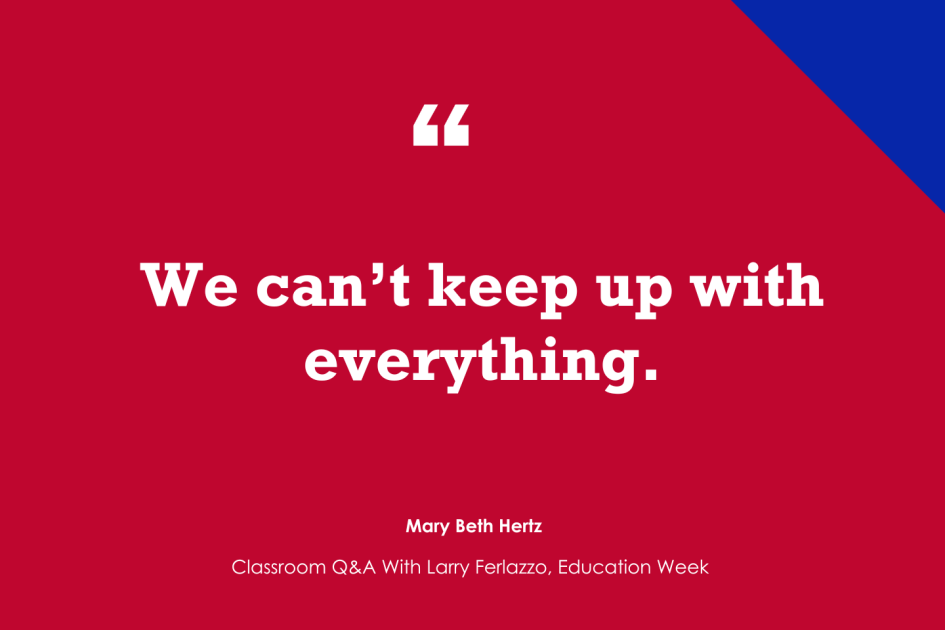Navigating the Deluge: Equipping Students for Media Literacy in the Digital Age
The relentless onslaught of information in our modern world presents a formidable challenge for both educators and students. We are no longer simply drinking from a firehose; we are facing a deluge, a dam break of information that threatens to overwhelm us. In this era of information overload, media literacy is no longer a supplementary skill; it’s a fundamental necessity for navigating the digital landscape. This article explores the critical need for media literacy education and provides practical strategies for empowering students to become discerning consumers and creators of information.
Mary Beth Hertz, a veteran educator and expert in digital and media literacy, emphasizes the importance of educators first grappling with the information overload themselves. She advocates for prioritizing a select few key sources of information, recognizing the impossibility of keeping up with everything. By modeling effective information consumption habits, educators can effectively guide their students through the same process. Lateral reading, a crucial aspect of media literacy, encourages verifying information by cross-referencing sources, researching authors and news organizations, and scrutinizing the origins of information. This investigative approach empowers individuals to critically assess the validity of information and avoid being swayed by misinformation or biased reporting.
Engaging students in media literacy education begins with understanding their existing habits and perspectives. Encouraging students to reflect on their own media consumption patterns, including their social media feeds, can reveal valuable insights into their information-seeking behaviors. Open-ended questions such as "What do you notice?" and "What do you wonder?" create a safe space for students to share their interpretations and observations without the pressure of being right or wrong. These discussions can illuminate the diverse ways students interpret information and highlight areas where their understanding may differ from the educator’s.
Differentiating between fact and opinion, journalism and commentary, is another key component of media literacy. Students need to develop the ability to discern objective reporting from subjective interpretations. Analyzing sports commentary, for example, can help students distinguish between the factual recounting of game events and the commentator’s personal opinions on the fairness of referee calls. By examining the language used in headlines, articles, and social media posts, students can learn to identify bias and loaded language, further enhancing their critical thinking skills.
Social media presents a unique set of challenges and opportunities for media literacy education. While access restrictions in schools may limit direct exploration of social media platforms, educators can utilize screenshots and curated examples to facilitate discussions. Examining community notes and fact-checking mechanisms on platforms like X (formerly Twitter) can help students understand the complexities of online information verification. Analyzing the sources and credibility of social media posts is crucial for developing informed skepticism and avoiding the spread of misinformation.
The CRAP Test, as outlined by Molly Beestrum, provides a practical framework for evaluating information sources. This framework encourages students to critically assess the Currency, Reliability, Authority, and Purpose/Point of View of information they encounter online. This simple yet effective tool equips students with the skills to discern credible sources from unreliable ones, promoting informed decision-making in the digital world.
Media literacy education doesn’t require elaborate lesson plans or extensive resources. Even brief discussions about headlines, screenshots of social media posts, or challenges to verify information can cultivate critical thinking and promote healthy skepticism. By fostering curiosity and encouraging students to question the information they encounter, educators can empower them to become discerning consumers and responsible creators of digital content. In an age of overwhelming information flow, these seemingly small exercises can equip students with the essential "waterbending" skills they need to navigate the digital deluge and emerge as informed and empowered citizens.
The importance of media literacy extends beyond the classroom. It’s a vital life skill for navigating the complex information landscape that permeates our daily lives. By equipping students with the tools to critically evaluate information, educators are not only preparing them for academic success but also for responsible and informed participation in our increasingly digital society. Media literacy is no longer a luxury but a necessity, empowering individuals to navigate the digital world with confidence, critical thinking, and discerning judgment. This, therefore, underscores the urgency and relevance of embedding media literacy education in all content areas, preparing students for the challenges and opportunities of the digital age.


